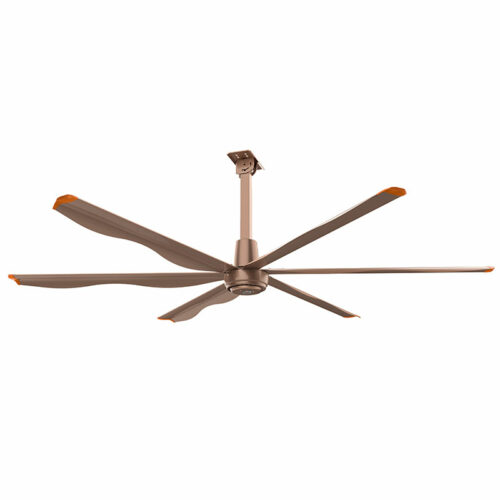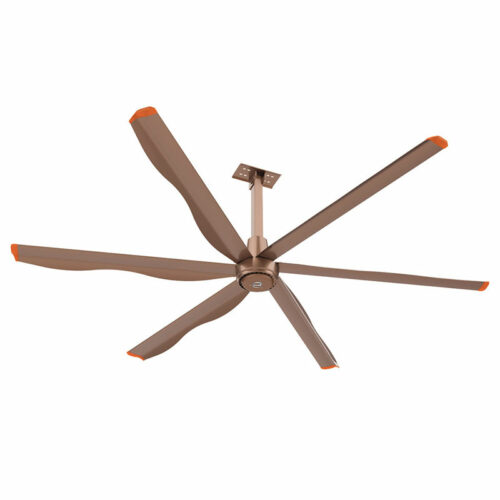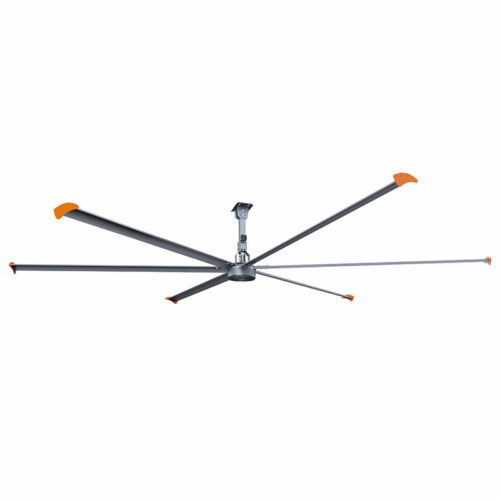If the temperature in the workshop is too high, the personnel working in the workshop will be prone to heat stroke if the temperature is higher than the normal range for a long time, and the work efficiency will become lower. When the human body is in a high-temperature environment, the sweat secretion rate increases, which causes the body to lose too much water, and it is even prone to dehydration. In a high-temperature environment, it is also tricky for human beings to concentrate, resulting in lethargy, prone to mistakes, and causing unnecessary losses. Serious production accidents may even occur, resulting in unnecessary casualties.
Mechanical equipment will always generate corresponding heat in the process of production and operation. If the previously generated heat is not discharged or absorbed in time, the heat generated during operation will continue to be superimposed, which is particularly likely to cause wear and tear on mechanical equipment and reduce equipment damage. If the temperature is too high, it may also cause the accident of spontaneous combustion of mechanical equipment.
Therefore, workshop cooling is a must for enterprise companies. In order to maintain normal operation and maintain good production efficiency in the workshop, problems such as excessive temperature and poor ventilation must be solved.
The following editor will introduce you one by one to the cooling equipment of general workshops:
Central Air Conditioning
The advantages of central air conditioning are fast cooling and a good cooling effect. It is one of the most common cooling equipment for large companies and enterprises. Many large enterprises and dust-free workshops generally use central air conditioning to cool down. The central air-conditioning system consists of a cold and heat source system and an air conditioning system. The principle of liquid vaporization refrigeration is used to provide the required cooling capacity for the air conditioning system to offset the cooling load of the indoor environment; the heating system provides the air conditioning system with heat to offset the heat load of the indoor environment. The refrigeration system is a crucial part of the central air-conditioning system, and its type, operation mode, and structural form directly affect the economy, efficiency, and rationality of the central air-conditioning system in operation. For large-area open workshops and workshops, the investment and maintenance costs of central air conditioning will be relatively large.
Air Cooler/Water-Cooled Air Conditioner
The working principle of the air cooler (evaporative air conditioner) is the combination of the fan and the water curtain. The water pump pours water on the water curtain. Under the positive pressure of the fan, the air penetrates the water curtain and becomes a cold air cooler. It uses the water circulation system in the machine to absorb the heat in the air blown in by the fan to achieve the cooling effect. A cooling product that is between a fan and an air conditioner.
However, when large-scale cooling is required, the air cooler is not suitable. The number of air coolers that need to be configured is very large. The noise of a single air cooler is very loud, and the water consumption is very large. A large factory usually has several hundred units a month. The cooling fan will consume dozens of tons of water.
Cooling Water Curtain
The core of the water curtain cooling process is completed on warm curtain paper. There is a thin layer of water film on the surface of the corrugated fiber paper. When the outdoor dry and hot air is sucked by the fan to pass the wet curtain paper, the water in the water film will absorb the heat in the air and evaporate, taking away a lot of latent heat. The temperature of the air passing through the wet curtain paper is lowered, and the cool and humid air after such treatment enters the room mixes with the hot air in the room, and is discharged to the outside through the fan.
At the same time, the cooling water cooling also has the problem of limited installation location, which cannot cover the entire area of the large factory building, resulting in an insignificant cooling effect. The biggest disadvantage of the water curtain machine is that the humidity is high during operation. A large amount of water sprayed and volatilized in the water curtain machine will increase the humidity of the workshop. Many production workshops such as furniture coating, food processing, dry storage warehouses, etc. are not suitable for Working in an environment with high humidity has greatly reduced their scope of application.
Negative Pressure Fan
A negative pressure fan is a cooling principle that utilizes air convection and negative pressure ventilation. It naturally inhales fresh air from the opposite side of the installation site—the door or window and quickly forces the hot indoor gas out of the room. Any problems with poor ventilation can be avoided. Improved machine. The biggest function of the negative pressure fan is ventilation, smoke exhaust, dust removal, etc., but it is very unsatisfactory in terms of the cooling effect. When it is actually used in a large workshop, the ventilation and exhaust in a large area and a large area will be very slow and weak. The number of installations is very large. At present, the negative pressure fans on the market are generally 10 and 12, so the overall power consumption is very large.
Traditional Wall-Mounted/Floor-Standing Small Fan
The advantages of traditional wall-mounted/floor-standing small fans are that the initial investment cost is suitable, the local air volume is large, and there are various models such as desktop, ceiling, floor, and wall-mounted to choose from. It is also one of the cooling equipment used by most enterprises at present.
However, this widely used small fan also has many disadvantages: its service life is short and it is often damaged. In particular, the floor-mounted horn fan affects the placement of the site and reduces production efficiency. In the event of a collision with a small fan that rotates at a high speed, it is prone to safety accidents. At the same time, the cooling effect of this small fan is not very obvious, and its coverage is very low, only tens of square meters. Therefore, when a large workshop is laid out, hundreds or thousands of units will be used, so the total power consumption and maintenance are also very large.
Industrial Ceiling Fan
The large industrial fan is a large ceiling fan with a diameter of up to 7.3 meters. The area blown by the fan is directly related to the fan’s diameter. It covers a wide area and is easy to clean. Compared with the small fan, the central air conditioner has noise. The advantages of small size and low energy consumption.
The wind-blown by the industrial fan is exactly like the natural breeze system, which is the air volume of 1-3m/s for the best cooling feeling of the human skin, and the employees can feel the temperature difference effect of 5-8 degrees. It will not affect the work of employees, allowing employees to have a comfortable working environment in the hot summer, thereby improving production efficiency. It is widely used in tall industrial plants, logistics warehouses, automobile manufacturing, leisure clubs, sports venues, automobile (train) stations, livestock farms, the foundry industry, the metallurgical industry, etc. Large industrial fans consume only 1.2 kWh of electricity per hour, and one can replace hundreds of traditional small fans.
In addition, industrial fans are very compatible with other cooling equipment. For example, the combination of big palm industrial fans and central air conditioners or air coolers can be very suitable for large spaces. When there is no large fan, only central air conditioners or air conditioners can be used. When it is necessary to set up a large number of air supply pipes and hang it indoors, it will affect the aesthetics and building safety. However, the strong industrial wind is used in conjunction with the central air conditioner or air cooler to improve the cooling effect and reduce energy consumption, so that ventilation, cooling, ventilation, saving and beautiful The realization of the goal of safety and safety is of great significance to the treatment of air in tall buildings.







